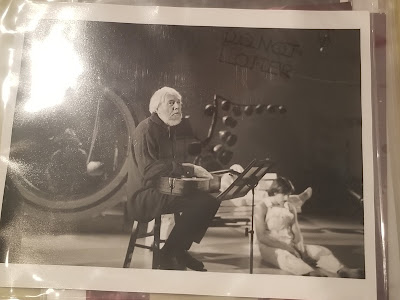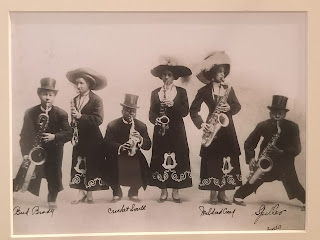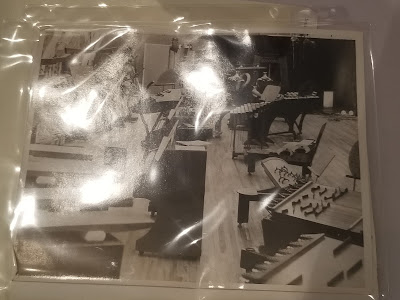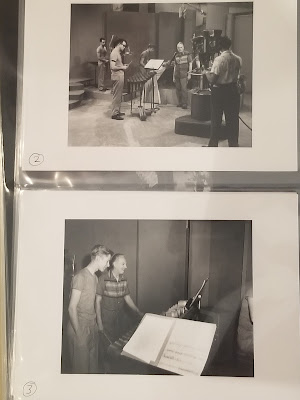*A book review I wrote. Originally published in French 'zine "Rockin'." It deserves a re-posting here on this blog, as it is an excellent read. Pick up a copy by following the link at bottom (Bopalacious.com). The author is currently working on a 2nd novel.
“RAT WAX: A book
review by Justin Lee Russell of ‘Record Weasels’ by Dick Blackburn”
The desire to collect various
things is a very basic, fundamental concept of humanity and civilization. From a
more primordial perspective, it is a way to survive. Needless to say; we
collect food, clothes, money; even ideas and emotions. Some of us more,
slightly damaged individuals, take it a step further: records, baseball cards,
autographs, post cards, matchboxes, movie posters, comics, vintage furniture,
salt and pepper shakers, Elvis memorabilia, classic cars, sexual partners, and
pornographic films. I’m sure there is some wretched degenerate, somewhere out
in the world; with a collection of pubic hair belonging to celebrities. The
list of things people collect is nearly endless. Go to the local pharmacy, some
confused and frail grandmother has a massive collection of clip-out coupons.
When she goes home, she lies in a pile of thousands of beanie babies.
Collecting is, usually, harmless. But as author Dick
Blackburn magnificently shows us in his brilliant, but weird novel; collecting
has its dark side. Obsessing, cataloging, alphabetizing, numbering, assorting,
discovering, chronological order, color-coding, instinctual purchasing, the
mathematical breakdown of one’s paycheck, the secrecy, the little white lies
that one tells oneself and perhaps a significant other. Collecting can touch
upon some heavy advanced psychology. Sometimes collecting and obsessing can
deliver one into the bosom of a profound and abounding joy, other times one might
find himself dead in the potholes of some dark, lonesome, and dank downtown
alley with a switchblade thrust deep into the thoracic cavity of the chest. Or
if you are lucky; it will just destroy your marriage, disappoint your love
ones, or cause your utilities to get disconnected, it will make you wreck your
Trans Am, or put your widescreen TV in hock, or get you in trouble with petty idiotic
criminals. In Dick Blackburn’s bizarre and darkly comedic novel, almost all
these things happen to its score of colorful characters. Criminals,
backstabbers, Indian-givers, bitter impregnated lovers, judgmental mothers,
lascivious shysters, and money hungry double-dealers constitute the perfectly
dysfunctional corrupt world contained within the feral pages of “Record
Weasels.”

The reader will go on a mad, twisted
journey with Kevin the novel’s anti-hero. The reader’s emotions and ability to
discern, or “read” into his fellow humans will be tested. The electricity of
neurons will short. Social connectivity will backfire. Kevin is both affable
and despicable. He is constantly on a precipice, ready to leap into full
realization of either characteristic. He is vermin, shirking and swindling, in
the burrows with other vermin. The reader will feel sorry for those around
Kevin; especially for Marlene, his significant other. One will find himself
thinking: “at least he is addicted to records and not heroin,” or “he could be
into dealing with drugs, firearms, and human bodies but isn’t,” or “Marlene
should be glad he collects records and not child porn”. The author, perhaps
inadvertently and in conjunction with psychology, lends the novel a moral
sense. There are definitely lessons to be learned within this novel. The
inner-workings of both love and hate will be explored and there is plenty for
the existentialist. One will realize that the concept of human relation is a
wondrous, but greatly burdening thing. Perhaps, sometimes……maybe we’d do better
journeying out into the woods…….alone.
Mr. Blackburn knows his subject
matter and, exhaustively, did his research; this makes for an easy read. He
delves into the world of record collecting, record history, the vinyl record
industry, and music history. Record labels, record pricing, record grading, the
exact year records were recorded, the various genres and sub-genres, their chart
positions, and the individual record histories. It is very esoteric. The
lucidity and ease of his writing and the universality of collecting and obsession
combat this, and brings mass appeal and interest. This novel is for anyone who
has collected something, or even anyone who has been in love.
This novel, most assuredly, fits snugly into the long and dark history of the dime store novel, noir fiction,
and pulp fiction. It seems to engulf the various pulp genres and it reads like
such, but has enough ultra-violence, hopped-up sex, modern conversation, and
blockbuster action to feel completely new, original, and refreshing. The
hipsters will call it “vintage” or “retro”. When reading this novel, authors
like James Ellroy will come to mind. Also, one can get a whiff of Louis
Ferdinand Celine’s dark pessimistic humor, the scathing brutality of Selby, the
cool of the Beat poets, and the nervous, weird, and perverted awkwardness of
Crumb.
Fans of Tarantino, the Cohen
Brothers, Woody Allen, Kevin Smith, the quirkiness of Wes Anderson, and film noir will love this novel. I mention film and filmmakers, because one truly
awesome and peculiar characteristic on Blackburn’s novel is that it seems to
transcend and defy the limitations and the drawbacks of a novel. It isn’t
stuffy, nor does it ever feel congested, bloated, or overbearing. It seems to
flow freely between the different artistic mediums, in that; although it is a
novel, it feels like a comic and at other times like a film. This is a unique
effect. It screams from its physical prison of book form, to be transformed
into a screenplay and, ultimately, an indie-film. It wants to be a comic series
or an instant cult classic film.
The author reading from "Record Weasels" at Book Soup in LA.
























































